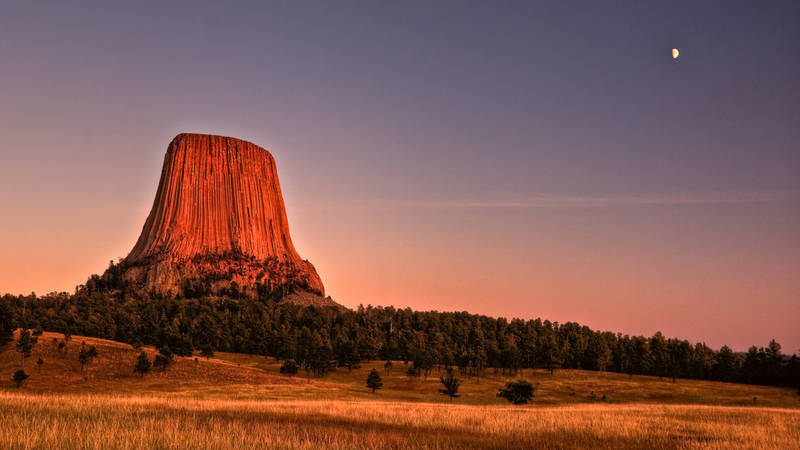The announcement of Chuckwalla National Monument makes historic contributions to conservation in the Southwest.
Spanning roughly 18 million acres and stretching 600 miles from Utah to California, the Moab to Mojave Conservation Corridor is the largest connected and protected landscape in the contiguous U.S.
That’s big! For comparison, the Greater Yellowstone Ecosystem comes in at No. 2, at just over 6 million acres.
This corridor connecting the Mojave Desert to the Colorado Plateau may appear as a patchwork of protected lands, but it weaves together wildlife habitats and is a crucial bridge between ecosystems. It also protects history and cultural traditions tied to the landscape and supports regional economies.
With the designation of Chuckwalla National Monument this week and additional national monuments during his administration, President Joe Biden has added over 2.8 million acres of protected public land to this corridor, making historic contributions to conservation in the Southwest. It also links four national parks — Canyonlands, Capitol Reef, Grand Canyon and Joshua Tree — with five national monuments, as well as Glen Canyon National Recreation Area, Lake Mead National Recreation Area and Mojave National Preserve.
NPCA has worked for decades to champion the protection of national parks and support new monuments that form the heart of this corridor.
Last year, more than 22 million people visited these parks to see the breathtaking red rocks in Canyonlands, the night skies at Joshua Tree, the sunsets at the Grand Canyon and more. Park visitors brought $2.08 billion in visitor spending to local communities and supported more than 25,000 jobs.
But this corridor isn’t just a space for people — it’s a lifeline for wildlife, providing unbroken pathways for species such as desert bighorn sheep. The corridor enables them to migrate between lower and higher elevations to find food and safety as they move. Birds, too, rely on this connectivity, nesting in higher elevations of the Colorado Plateau and wintering in the warmer Mojave Desert. With the impacts of climate change, wildlife more and more will need the ability to migrate for survival as they adapt to rising temperatures and drought.
The Colorado River flows through this corridor and is essential for millions of people and countless species who rely on these waters. By protecting lands upstream of key reservoirs and along tributaries, new monuments such as Baaj Nwaavjo I'tah Kukveni are helping to protect clean water, maintain water flows downstream and preserve habitats for native fish.
The Moab to Mojave Conservation Corridor builds on a legacy of locally led conservation in the Southwest. Grand Canyon National Park, established in 1919, set the stage for the century of conservation efforts that have followed. Many of these designations, including those under the Antiquities Act, have been bipartisan victories that support the Southwest’s natural resources and heritage.
This region includes traditional homelands of dozens of Tribal nations, whose culture, economies and sovereignty remain deeply connected to the landscapes. Tribal nations like the Southern Paiute, Navajo and Chemehuevi have stewarded these landscapes for millennia.
A network of newly protected lands
- Chuckwalla National Monument, 2025:
This newly designated monument expands one of the largest desert preserves in the world found in the California desert. This area is critical for protecting migration routes for desert bighorn sheep, and habitat for desert tortoises, golden eagles, burrowing owls and more, ensuring they can thrive amid growing threats from habitat loss and climate change.
- Avi Kwa Ame National Monument, 2023:
Avi Kwa Ame, meaning Spirit Mountain in Mojave, is sacred to 12 Tribes, including the 10 Yuman-speaking Tribes that pay reverence to Spirit Mountain as the center of their creation. This monument, established after decades of Tribal advocacy, protects ancient petroglyphs, sweeping Joshua tree forests and critical habitat for desert tortoises.
- Baaj Nwaavjo I’tah Kukveni – Ancestral Footprints of the Grand Canyon National Monument, 2023:
Named in the Hopi and Navajo languages, this monument protects culturally significant sites like Red Butte and borders Grand Canyon National Park. The monument helps protect the Grand Canyon watershed and the Colorado River, as the area was at risk for decades from threats such as uranium mining, which put the Canyon’s creeks and waterways at risk. The Grand Canyon Tribal Coalition led advocacy efforts to establish this national monument, and this designation ensures Tribal collaboration in its management and honors thousands of years of Indigenous history and culture.
- Restoration of Bears Ears and Grand Staircase-Escalante National Monuments, 2021:
Restored by President Biden, these monuments safeguard cultural landmarks, cliff dwellings, vital habitats and world-renowned geological wonders. Tribal nations led the movement to protect this landscape. It marks the first monument that will be managed in collaboration with Tribal nations, a momentous shift in the federal government’s approach to management of public lands.

Which Presidents Have Created the Most National Monuments?
Presidents from both political parties have used the Antiquities Act to preserve natural and cultural resources. Here’s a top-10 list of presidents who have created national monuments on public lands.
See more ›This first-of-its-kind management plan emphasizes the full, connected ecosystem and reasonably balances public access and use of the monument. It not only protects the land’s cultural and natural resources but also helps the monument share a fuller history of who has cared for this land for thousands of years — making historic progress in placing Tribal collaboration and communities at the forefront of land stewardship.
A story of resilience and connection
Together, these protections link a story of climate and cultural resilience and connection — between ecosystems, communities and the national parks of the Southwest. Since its passage in 1906, the Antiquities Act has been used by all but three presidents to establish roughly 160 national monuments. These designations have a long history of protecting public lands and cultural and historical sites for all Americans to experience.
Cartography by Amy Tian, NPCA. Data layers processed by Nik Moy, NPCA. Data was acquired from the US Protected Areas Database, National Park Service, and Bureau of Indian Affairs. We recognize the Indigenous Tribes represented on the map as the land’s ancestral caretakers since time immemorial. When possible, the autonym of the Tribe or Indigenous place name is used first then followed by the federally designated name in parentheses. Research for names was primary referenced from Tribal government websites. As such, there may be discrepancies and please contact the authors to update the information. The place names are the intellectual and cultural property of the Indigenous people in whose territories they are located.
Stay On Top of News
Our email newsletter shares the latest on parks.
About the authors
-
 Caitlyn Burford Communications Manager, Southwest, Pacific, Northwest
Caitlyn Burford Communications Manager, Southwest, Pacific, NorthwestCaitlyn Burford joined NPCA in 2023 as a communications manager representing the Northwest, Southwest, and Pacific regions, along with NPCA’s work on national energy policy.
-
 Amy Tian Cartographer and GIS Analyst, Conservation Programs
Amy Tian Cartographer and GIS Analyst, Conservation ProgramsAmy is a cartographer and science communications specialist who directs NPCA’s cartographic mapmaking and science-based storytelling on national park landscapes. She finds creative ways to develop cartography, data visualization, and geospatial solutions that strengthen the connection of science and advocacy.
-
 Nik Moy Senior Program Manager, Conservation Science & Policy
Nik Moy Senior Program Manager, Conservation Science & PolicyNik is a landscape conservation and science communications expert who directs the organization's databases, cartography, and geographic information systems to best empower the connection of science and advocacy. Additionally, he leads geospatial science for NPCA's priority national park landscapes work.
-
General
-
Issues


